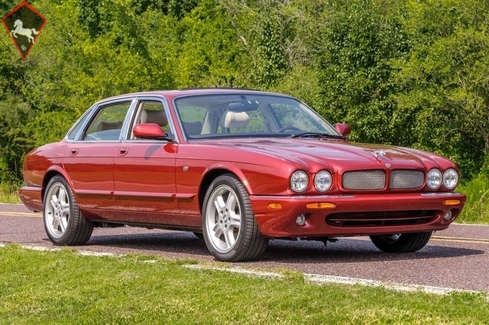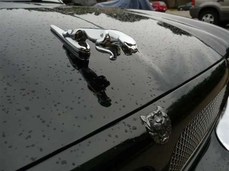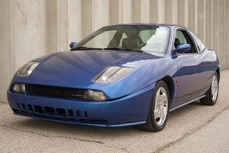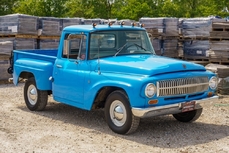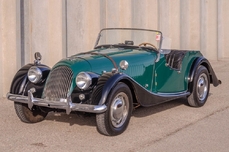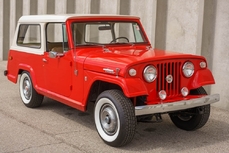Jaguar XJR 4L V8 32V Sedan 1999
General description :
One-owner car
One of 15,203 XJR examples made in
4.0L Supercharged DOHC, 32-valve V-8 (code AJ-26S) making 370 horsepower!
Five-speed automatic transmission (code W5A580) and 3.06 gearing
Carnival Red Mica exterior (code CGG)
Oatmeal leather interior (code AGD)
Automatic climate control, variable-ratio power rack-and-pinion steering, power four-wheel disc brakes, cruise control, power locks, power windows, power sideview mirrors, power and heated front seats, electric tilt and telescoping steering column + memory and auto tilt-away steering column
Sunroof, Harman Kardon AM/FM stereo, foglights, power antenna
Safety equipment includes dual front airbags, safety-belt pretensioners, side-impact airbags, anti-lock brakes, automatic stability control, traction control
Recent service include (2) new fuel pumps, new rotors & pads, 4 new Pirelli P-Zero tires
This XJR would have made a great successor to the Equalizer’s Jaguar XJ6, the 1980s television detective drama starring Edward Woodward as Robert McCall, a freelance vigilante who worked out of a newspaper classified advertisement. This XJR is a rolling bruiser, particularly with its supercharged engine.
Made in Jaguar’s Coventry, England factory in September 1998, this car is finished in Carnival Red Mica (code CGG)
The car’s paint and trim are in overall excellent condition. The bodywork is straight and solid, the engine bay is immaculate and the trunk is in good order. The body-colored bumpers topped with chrome inserts fit tightly to the car’s body. A monowiper handles the cleaning duties during rain, snow, etc. The XJR has a body-colored radiator grille surround, chrome window frames and rain gutters but with a stainless-steel mesh insert rather than the normal vanes. Other exterior touches include the “XJR” rear badging and larger exhaust outlets.
This big cat rolls on 4 brand new Pirelli P-Zero radials, size 255/40R18 at every corner. Each tire is mounted on factory alloy wheel. The wheels and tires are all in very good order. Other new parts include two fuel pumps and new brake rotors and pads.
Under the forward-hinged hood is a 4.0L DOHC, 32-valve V-8 engine with an Eaton supercharger (modified Roots-blower). It generated 370 horsepower and 387 lbs-feet of torque. Backing the motor is a Mercedes-Benz sourced five-speed transmission (code W5A5800) and a 3.06:1 rear end. The XJR could reach 60 mph from a standstill in 5.6 seconds, with an electronically limited top speed of 155 mph.
Automatic climate control, variable-ratio power rack-and-pinion steering, power four-wheel disc brakes, cruise control, power locks, power windows, power sideview mirrors, power and heated front seats, electric tilt and telescoping steering column + memory and auto tilt-away steering column. Additional features include a sunroof, Harman Kardon AM/FM stereo, foglights and a power antenna.
Safety equipment includes dual front airbags, safety-belt pretensioners, side-impact airbags, anti-lock brakes, automatic stability control, traction control.
Inside, the cabin is upholstered in Oatmeal-colored Connolly leather (code AGD) with black Wilton wool carpeting. The seats, inner door panels, center console, carpet and headliner are all in very good order. The four-spoke steering wheel with airbag is in excellent shape. A console-mounted shifter with its distinctive J-shaped shift gate and a factory infotainment system complete the interior.
Competition to this Jaguar in 1999 included Bentley’s Arnage Green Label, BMW’s 750iL, Cadillac’s Seville STS, Infiniti’s Q45, Lexus’ LS400, Lincoln’s Town Car L and Mercedes-Benz’s S600.
If you want a more-than competent grand tourer with more than enough power under your right foot and a supple sports suspension along with a cocoon of sumptuous luxury, then you really need to check out this Jaguar XJR sedan at MotoeXotica Classic Cars today.
VIN: SAJPX1845XC856198
This car is currently located at our facility in St. Louis, Missouri. Current mileage on the odometer shows 56,590 miles. It is sold as is, where is, on a clean and clear Missouri mileage exempt title. GET OUT AND DRIVE!!!
https://www.motoexotica.com/inventory/inventory/15277/1999/Jaguar/XJR/SAJPX1845XC856198.html
1999 Jaguar XJR 4L V8 32V Sedan is listed sold on ClassicDigest in Fenton (St. Louis) by for $24900.
Car Facts
Car type : Car Make : Jaguar Model : XJR Model Version : 4L V8 32V Sedan Engine size : 0.0 Model Year : 1999 Sub type : Sedan Location : Fenton (St. Louis)
Sold
Seller Information
Sold
People who viewed this Jaguar XJR also viewed similar Jaguar listed at ClassicDigest
Other cars listed for sale by this dealer
About Jaguar
Ah, the story of Jaguar, from its early days as the SS Cars Ltd. to its pinnacle with the D-type, and the street-going evolution in the form of the iconic E-type. There's something quintessentially British about this tale, and I'll narrate it as a British journalist might.In the Beginnings:
Our journey into the world of Jaguar begins in the 1930s, when a company known as SS Cars Ltd. emerged. Despite the unfortunate coincidence of their initials with the rising political tensions in Europe, they started producing stylish and performance-oriented cars. The SS 100, introduced in 1936, was a symbol of elegance and speed, setting the stage for what would become Jaguar.
The Birth of Jaguar:
As the shadows of World War II loomed, SS Cars Ltd. wisely decided to disassociate themselves from the SS initials. Thus, in 1945, they officially became Jaguar Cars Ltd., a name that would soon be synonymous with British luxury and performance.
The XK Series:
Jaguar's post-war era brought us the XK 120, a true sensation in 1948. With its sleek design and a powerful 3.4-liter inline-six engine, it became the world's fastest production car. The XK 120 was the blueprint for what lay ahead – Jaguars that blended style with speed in a uniquely British fashion.
The D-type Dominance:
Then came the D-type, a true racing legend. Introduced in 1954, it won Le Mans three times in the 1950s, showcasing Jaguar's engineering prowess. With its innovative monocoque construction and the iconic fin at the back, the D-type was the apex of Jaguar's motorsport success.
The E-type Emergence:
But the true turning point arrived in 1961 with the introduction of the E-type, often described by Enzo Ferrari as "the most beautiful car ever made." Its long bonnet, curvaceous body, and a 3.8-liter engine delivering exhilarating performance made it an instant classic. The E-type was not just a car; it was a work of art on wheels, and it could hit 150 mph on the road.
Street and Racing Success:
The E-type's beauty was matched by its capability on the track. The lightweight E-types were particularly successful in various racing events, cementing Jaguar's reputation as a force to be reckoned with in motorsport.
The Age of Refinement:
As we delve deeper into the Jaguar story, we find that the 1950s and 1960s were an age of refinement and expansion. Alongside the magnificent D-type and the E-type's iconic emergence, Jaguar introduced models that further solidified its reputation for luxury and performance.
The MK2:
In the late 1950s, Jaguar unveiled the MK2, a sports sedan that combined elegance with power. This sleek four-door saloon was a favorite of bank robbers and law enforcement alike, thanks to its exceptional speed and handling. The MK2 was a symbol of Jaguar's ability to blend sophistication with performance and had a successful racing career as well.
The XJ6:
Fast forward to 1968, and Jaguar launched a car that would define luxury saloons for decades to come – the XJ6. It was a masterpiece of engineering and design, featuring a smooth inline-six engine, independent rear suspension, and a spacious, beautifully appointed interior. The XJ6 was a symbol of British elegance and provided a ride so smooth that it seemed to glide over the road. It became the flagship model for Jaguar and set the standard for luxury saloons, showcasing a level of refinement that left competitors in awe.
The Blend of Classic and Modern:
While the MK2 and XJ6 represented the evolution of Jaguar's saloon cars, they maintained the brand's commitment to performance and luxury. These cars didn't just belong on the racetrack; they were equally at home cruising down the grand boulevards or gliding through the English countryside.
The Challenges of Change:
However, as the 1970s arrived, Jaguar, like many British automakers, faced financial challenges and changes in ownership. The British Leyland era brought both opportunities and struggles, as the brand navigated through various mergers and transitions.
Nevertheless, the legacy of the MK2 and XJ6, along with the D-type and E-type, continues to define Jaguar as a manufacturer that combines timeless elegance with a spirit of performance. These classic models, whether driven on winding roads or parked as collectors' treasures, serve as a testament to Jaguar's enduring presence in the world of automotive excellence.
The Jaguar story, from its early days as SS Cars Ltd. to the creation of automotive icons like the E-type, MK2, and XJ6, is a journey that reflects the very essence of British motoring – a blend of luxury, power, and style that continues to captivate enthusiasts and connoisseurs alike.
